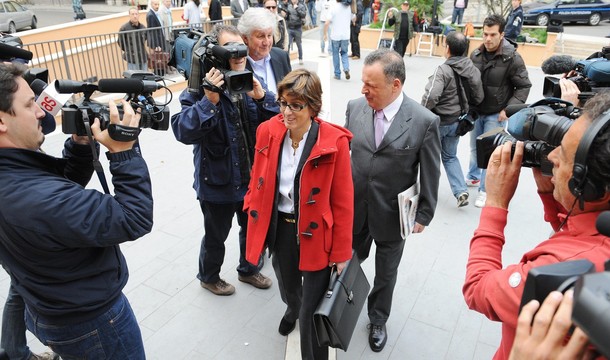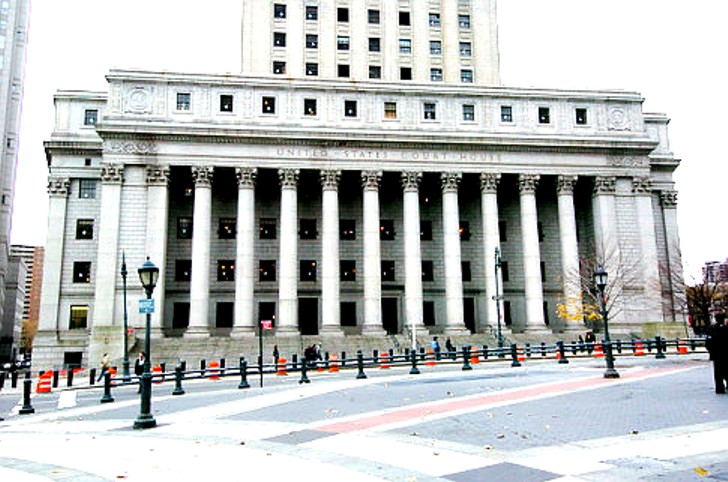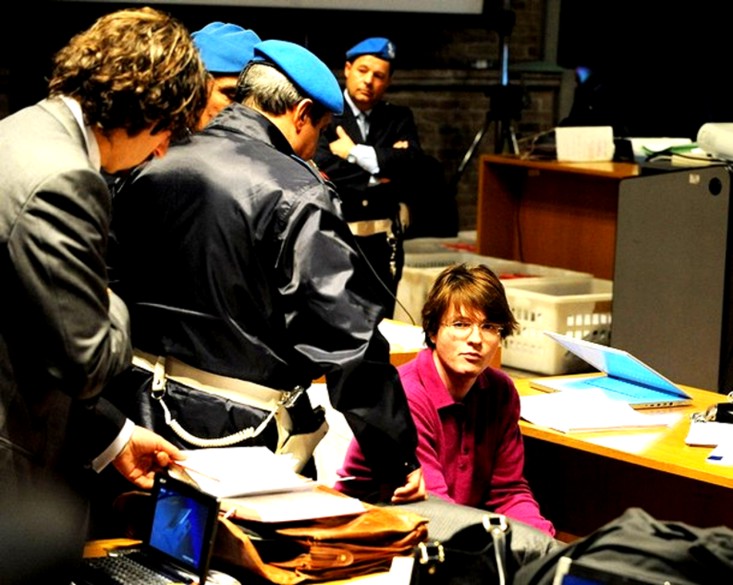
Category: Raff Sollecito PR
Thursday, February 24, 2011
Thursday Trial Hearing Scheduled For Sollecito Family Charges Of Perversion Of Justice
Posted by Peter Quennell
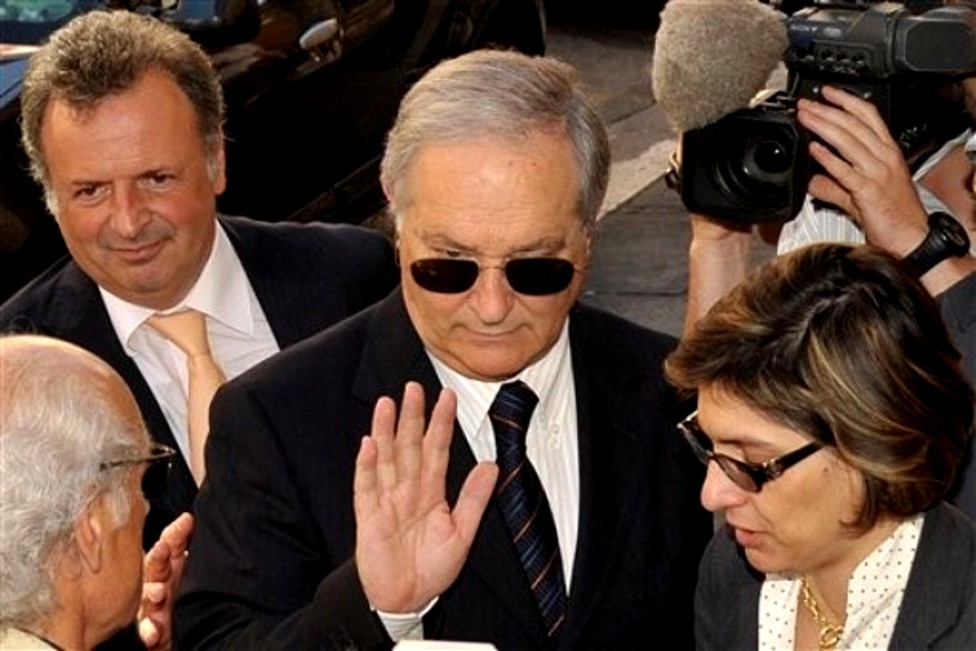
[Above: Raffele Sollecito’s father Dr Francesco Sollecito who is a urologist practicing in Bari]
Update: Italian media sites are reporting that the new trial date for the Sollecitos is 28 March as the investigating judge Alberto Avena has commitments outside Perugia. The prosecutors are Giuliano Mignini and Manuela Handy. The Sollecito defense team is Marco Brusco, Francesco Crisis, Luca Maori and Donatella Donati.
There should be a hearing in Perugia in the case against the Sollecito family on Thursday.
Francesco (Sollecito’s father), Vanessa (his sister), Mara (his stepmother) Giuseppe (his uncle) and Sara (his aunt) all of Bari have been charged with leaking a crime scene video out of the 10,000-plus pages plus of evidence and exhibits to Telenorba, a Bari television station.
It was an apparent attempt to discredit the investigators although the video backed that claim weakly if at all. The video included deeply upsetting closeups of Meredith’s uncovered body and the wounds to her neck. It was later re-broadcast by the state network RAI throughout Italy.
Richard Owen of the London Times in an article no longer online described the Telenorba and RAI broadcasts as follows.
Relatives of Meredith Kercher, the British student murdered in Perugia in November, were said to be shocked and distressed last night after images of her bloodied corpse were broadcast on Italian television…
Telenorba, which showed the footage late at night, warned viewers that it was disturbing and suitable only for adults. It showed police scientists in white protective clothing pulling back the duvet to reveal Ms Kercher’s body and slashed throat, and turning the corpse over to examine her bloodied back.
Her eyes were covered by a mask. RAI did not include this part of the footage in its news broadcasts.
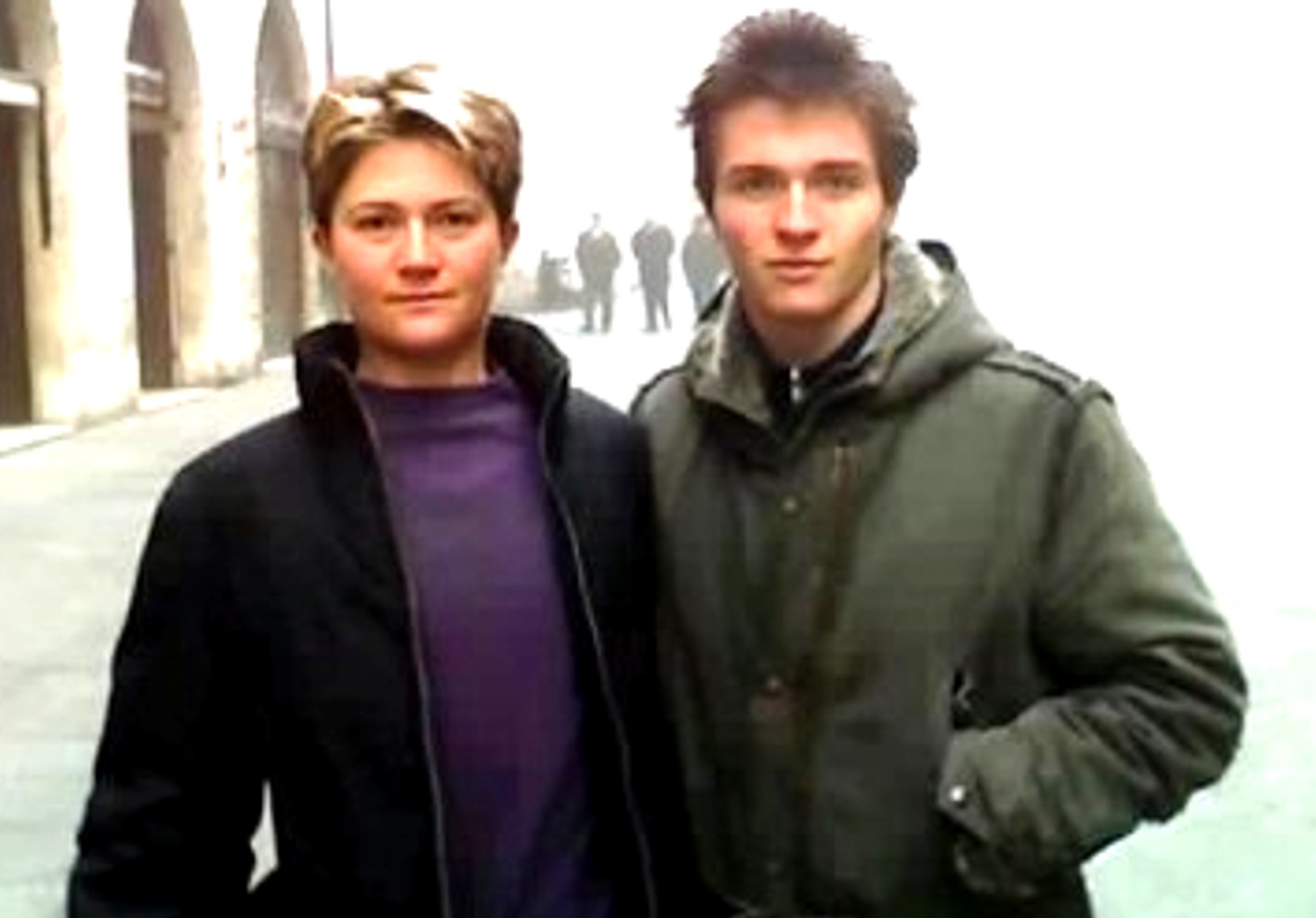
[Above Raffaele Sollecito with his sister Vanessa Sollecito who was fired late in 2009 by the Carabinieri]
This is a translation by Jools of an April 2009 report in La Nazione.
The prosecutor of Perugia has served notice of the completion of four investigations into Raffaele Sollecito’s family members and two journalists of the TV station Telenorba on the transmission of a forensic video in which the body of Meredith Kercher wa shown…
The report on the investigations (usually a prelude to a request for trial) indicates crimes were committed of defamation, invasion of privacy, publication of arbitrary acts of investigation and publication of gruesome acts.
According to the reconstruction by the Perugia prosecutor, the father and sister of Raphael Sollecito had legitimately obtained the scientific survey of the police, and had then illegally provided it to Telemundo.
The report also cites a journalist and the editor of Panorama for the publication of an article in which they reported that blood samples from Meredith had revealed an alcohol concentration above the legal norm - implying she was drunk when she was killed. This claim was proved a lie in the course of the forensic tests.
And this is a translation by Jools of an AGI news-service report of April 2009 also no longer online.
Eight “notices of termination of the investigations” have been reported by the public prosecutor of Perugia… Four Sollecito family members, the TV journalist on Telenorba and the director of the station, are accused of the crimes of defamation, invasion of privacy, publication of documents during the investigation, and publication of gruesome acts….
According to the reconstruction, the Sollecito family members delivered to Telenorba the video and photos of the crime scene survey carried out by the forensic team on November 2 of 2007 in Meredith’s house. Telenorba then put the material on the air.
Other investigations are on-going.
The family members are all also charged with an attempt to manipulate the Knox-Sollecito trial through the political process. There is said to be evidence wiretaps capturing them trying to get family friends in the Italian parliament in Rome to have several senior investigators removed from the case.
Vanessa Sollecito was fired from the Carabinieri late in 2009 for her involvement in this attempt to manipulate politicians, and we believe she still faces a further internal Carabinieri hearing.

[Above: the town of Bari in south-east Italy where ferries depart for the east Adriatic coast and Greece]
Saturday, February 12, 2011
Sollecito Defense Team Breaking From Knox Defense Team On Legal Measures To Stop Lifetime Movie
Posted by Peter Quennell
The Amanda Knox team of Ghirga and Delle Vedova were ready to stop by legal means the showing of the Lifetime movie in Italy.
We presume they were only willing to go that far and no further because there are various signs that Edda Mellas and Curt Knox had a hand in the generation of this movie - not least that they have never denied it or decried it. Chris Mellas confirmed that they were helping out in his candid announcements that he tried to get Panettiere face to face in Capanne with Amanda Knox.
But there is already a huge separation between the Knox and the Sollecito defense teams - Giulia Bongiorno and Luca Maori (image above) have no liking at all for the runaway train of xenophobic conspiracy theorists.
And of course Raffaele Sollecito STILL does not confirm Amanda Knox’s attempted fifth alibi for the night that she was at his place all along.
We have already warned that the fact of this movie could make things very much worse for Amanda Knox.
Now it looks like this is happening. Giulia Bongiorno and Luca Maori want the movie delayed worldwide on the basis that it could SERIOUSLY damage their client’s prospects.
The large Italian news service ADNKronos is now reporting that if Lifetime do not confirm by this next Monday that the movie is to be held back until after the appeals are over, they will file suit in New York Federal court in Manhattan (image below).
If there is a Federal court session on this, we should be able to report from the front lines, hopefully with some shots, on the Lifetime producers trying to defend their bizarre movie.
Looking forward.
Sunday, October 31, 2010
Corruption Of Appeal: Angry Top Criminal Judge Chiari Is Blatantly Forced Aside
Posted by Peter Quennell

Umbria’s top criminal judge Sergio Matteini Chiari
Very Dirty Business
Only one month ago Umbria’s top criminal judge Sergio Matteini Chiari was to preside.
Now a very angry Judge Chiari has been forced aside with no public explanation from Chief Judge De Nunzio [image below] as to why.
A wildly wrongly qualified judge, Hellmann, a business judge with just two criminal trials in his past, both fiascos, mysteriously takes his place.
Rumors of foul play are appearing in the Italian media. Has Chief Judge De Nunzio been leaned upon politically? Do big bucks or rogue masons have any role in this?
Please click here for more
Friday, October 01, 2010
1 October 2010: Seattle PI’s Italy Based Reporter Andrea Vogt On Where Everything Stands
Posted by Peter Quennell

Former crack prosecutor Judge Chiari who once took an ex-Prime Minister down
Overview Of This Post
Another of those very useful roundup reports from Andrea Vogt, which contains some new points of real interest.
1) On Judge Sergio Matteini Chiari
When Bongiorno steps into the appellate courtroom to defend Sollecito, the judge will look familiar. Respected magistrate Sergio Matteini Chiari represented the prosecution during the controversial Andreotti appeals trial a decade ago in Perugia over the mafia murder of journalist Mino Pecorelli. Biscotti also defended a Cosa Nostra mafioso in that case.
Biscotti and Nicodemo Gentile, who represented Guede, have picked up a number of other high-profile Italian cases while awaiting Guede’s supreme court trial, scheduled for Dec. 16. The duo also represent the family of a murdered transvestite embroiled in a political scandal, as well as the family of a young girl gone missing from Taranto in August.
2) On the RS & AK appeal
The Knox and Sollecito appeal is scheduled to commence late in November.
Knox’s attorneys are soon expected to file “motivi aggiunti” or “additional motives” for appeal. That can include new evidence or witnesses defense attorneys think should be considered. The lead prosecutor—a substitute sitting in while a while a permanent replacement for the position is considered—will be joined by the two public ministers who originally prosecuted Knox and Sollecito; Giuliano Mignini and Manuela Comodi.
“We did not request to be involved,” said Mignini, reached by seattlepi.com this week. “In fact we thought we had wrapped up our duties with the conviction in the first trial. But when we were asked, we gave our availability.”
The appeals trial process will differ in many ways from the first trial. Only the makeup of the court—six lay jurors and two professional judges—remains the same. It will likely proceed much faster because the court is mostly debating Judge Massei’s judgment, not rehearing witnesses or re-examining evidence, though the court can specifically request to rehear key witnesses and the Knox and Sollecito defense teams have filed requests for an independent evaluation of certain pieces of contested evidence.
3) On possible outcomes from the appeal
On appeal, the case is once again wide open, as the court could do anything from giving Knox a harsher life-in-prison sentence to turning over her conviction.
“The court can review all the same evidence presented in the first trial, but simply decide that there is reasonable doubt, that they don’t believe it,” explained University of Parma criminal procedure professor Stefano Maffei.
The court also can agree with prosecutors, who are also appealing the 26-year-sentence and asking for life, and give her even more prison time. Or, the court can agree with the murder conviction, but find that mitigating factors outweigh the aggravated ones, which leads to a one-third reduction in sentence.
That is a most likely scenario, court observers such as Maffei say, especially since more than 18 Italian magistrates have reviewed the evidence in the Knox case and come to the same conclusion of culpability, which somehow ingrains the decision into the judiciary. For reasons that are sociological rather than legal—such as good behavior, political pressure, changed public opinion or prison crowding—sentences in Italy are often reduced on appeal.
“The tradition in this country remains that the court of appeal is usually more lenient than the court of first instance,” Maffei said.
4) On Amanda Knox’s slander trial
Knox will leave the prison for the first time in months [today] Friday. She’ll be shuttled in a police van into a protected side entrance to the courtroom, far from the media, which won’t be allowed into the closed-door hearing where “mostly technical” issues will be discussed.
She is charged with slander for accusing the Perugia police of hitting her as she was being interrogated the night before her arrest. During the course of the questioning, police became suspicious and turned up the heat over the course of several hours. Knox testified that they called her a liar and cuffed her on the back of the head twice while urging her to tell the truth. Multiple police officers and two interpreters who were in and out during the questioning deny such abuse took place and tell their own gentler version of how the night unfolded.
Unless one side produces audio or video of the questioning—which police and prosecutors have said does not exist because Knox was just a witness, not a suspect, when questioning began—it is likely to remain her word against theirs.
The presiding judge Friday (Claudia Matteini, the same judge who signed Knox’s original arrest warrant in 2007) could decide to hold an abbreviated trial, where everything is done behind closed doors and only documentary evidence is presented. She could decide there is enough evidence to move forward with a trial (or not). She could also simply choose to archive the case without passing judgment on its merit. Francesco Maresca, who represented the victim’s family during the Knox trial, represents the police in the case.
Here is our own take from trial reporting and the Massei Sentencing Report on what actually happened in the witness interview that night. Amanda Knox was thrown by Sollecito cutting her loose. (He has never since provided her cover.) But she did not confess - far from it. She fingered Patrick Lumumba. And as a suspect, she always had a lawyer present in subsequent interrogations.
More in the report too, on the movies, the books, and what it is really like to be serving one’s time It sounds punishing.
Tuesday, June 22, 2010
The Aviello Story Seems To Show The RS & AK Defenses All But Concede Guilt Of All 3
Posted by Peter Quennell
Defenses Grasping At Straws?
The Sollecito defense latched with alacrity onto baby-killer and jailhouse-snitch Mario Alessi three months ago.
This seemed to have been widely taken in Italy as a sign of the Sollecito defense’s desperate weakness, rather than as a get-out-of-jail-free trump-card for RS.
Several weeks ago, the Amanda Knox defense latched onto Camorra clan-member and jailhouse snitch Luciano Aviello.
With a lot less alacrity though - his various stories have been around for a long time. This seemed to have been widely taken in Italy as a sign of the Knox defense’s desperate weakness,
Luciano Aviello, who is now in prison, and his brother Antonio, now on the run, are or were connected to the Camorra (NBC Dateline report above) which is Naples’s equivalent of the Cosa Nostra in Sicily and the NDrangheta in Calabria. The Camorra was in some ways the older, larger and badder of the several mafia arms.
Luciano Aviello and Antonio Aviello were living in Perugia at the time the crime against Meredith took place. Over a year ago, our poster Catnip posted this translation of a report from Italy on the Perugia Murder File board.
Saturday 09 May 2009
Prisoner writes: ‘I know real murderer’s name’
“I know the real name of Meredith’s killer, a fellow-brother Albanian friend of mine told me, and it’s not Raffaele Sollecito.” Luciano Aviello is Raffaele Sollecito’s ex-cellmate and, now, maybe encumbering his admirer, is writing another letter to Court of Assize president Giancarlo Massei.
A few weeks ago he had sent a letter in which he claims to have asked two of his friends to break into the murder house to prove that anybody could have done so. Yesterday, the page count of his letter jumped to five, and the tone was angrier.
He’s had it with journalists, because they’ve referred to his less than clear past, and because they wrote about his previous never-proven-true “revelations” on various important and dramatic criminal cases (like the disappearance of little Angela Celentano).
He’s had it with the police too, in whom he confided his secret about Raffaele’s innocence and who didn’t even give him the time of day.
He maintains that, actually, he has a letter written by an Albanian friend, which contains the real name of the murderer, and he wants to speak only to the court president, Giancarlo Massei, to reveal it to him.
Even the lawyer on the civil side of the case, Francesco Maresca, acting for the Kerchers, remains skeptical: “That letter ought to be re-read carefully: it’s not flour from his grainsack*”.
*****************
* This is a proverbial phrase (non è farina del suo sacco = “it’s not grist from his own mill”) meaning it wasn’t written off his own bat, and that other hands contributed to it.
And there is a video of a Sky News Italy report in Italian dated 21 April 2009 which in effect says “this isn’t any big deal’.
Judge Massei showed no interest in him. So Aviello and his kaleidoscopic claims thereupon went onto the back burner.
Fast-forward to several weeks ago, when the Knox defense engages in a high-profile, noisy flurry of activity to get a deposition from Luciano Aviello.
This time, Luciano recalls, it was actually his own missing brother who did it, and he himself buried some clothing, a knife, and some keys.
Casting total doubt on everything Luciano Aviello ever says, his hometown newspaper Il Mattino in Naples comes out with this report. It is our translation.
The Meredith Case - A Mariano Clan Supergrass Pops Up
“Amanda Is Innocent”
By Gigi di Fiore
In the newsroom of the Mattino he seemed at ease. Luciano Aviello was [20 years ago] just over twenty years old, and had asked to recount his experience as a “streetwise youth in the Mariano Camorra clan”.
In an earlier time, a war was in full swing in the Spanish Quarter [of Naples] between the Mariano clan, the “picuozzo” [another name for this clan after the “picuozzo” or cord around a monk’s habit] and the Di Biase family, also known as the “faiano”.
The DDA (Direzione Distrettuale Antimafia or Distict Anti-Mafia Directorate) did not yet exist, but Federico Cafiero de Raho was already employed as prosecutor in the investigations into organized crime.
It was he who dealt with that bloody war. Twenty years later, Aviello had become a news-magazine character. Now in his own words, he claims to have a rolet in the Perugia trial for the Meredith Kercher case as a “decisive” witness.
On 19 April of last year, he addressed two little hand-written pages to the President of the Court of Assizes of Perugia, Giancarlo Massei. He declared himself ready to tell the truth, and revealed that he had twice given some friends of his the task of breaking the seals on the house where the crime took place.
On 31 March of this year, Amanda Knox’s defense team video-recorded the declarations made by Aviello, who is now 41 years old. As the weekly news-magazine “Oggi” writes, he said: “It was my brother who murdered Amanda [sic]. I can recover for you the knife used in the crime and the keys of that house”.
This fellow arrived on the third floor of via Chiatamone [Editor’s office of the Mattino] wearing casual clothes with a pretence of elegance: he never retracts anything, always seeking to find suitable words to best describe his “revelations”.
Contact lenses, slim, a cousin killed because he was affiliated to the Mariano clan, Aviello spoke, revealing an outline personality, in a shadow world of braggadoccio, always on the sidelines of the dealings and violent acts of those in power among the clans of the Quarter at that time.
He ended up in jail, having confessed to a murder. It wasn’t true, but they had promised him 5 million lira, a lawyer and an annuity.
The clan didn’t respect the pact, and so he began to talk freely. Enticed by the good life, he began to act as a gofer/go-between selling “black lottery” tickets. He felt important. He earned 500 thousand lira per week.
It wasn’t bad. Then he did “embassies” [message-running], little services, but never great criminal leaps. The clans considered him “not very trustworthy”.
He was implicated in the investigation into the Spanish Quarter Camorra, and convicted.
Today, Federico Cafiero, now deputy prosecutor and DDA Coordinator for the investigations into the Caserta province clans, says of him: “He was altogether untrustworthy, although every so often he would invent a new one [new story]. A revelation, as he would call it, which would subsequently reveal itself to be out and out nonsense”.
Such as when he said that he knew where Angela Calentano was to be found, or that he knew the hideouts of the main fugitives of the D’Alessandro di Castellammare clan.
For his “revelations” against Tiziana Maiolo, ex president of the Justice Commission of the Chamber, he was hit with a trial, in 1997, for calumny.
Two years ago, he fired off his biggest tale yet: he accused a public prosecutor from Potenza in the famous trial on “dirty robes” between Catanzaro and Salerno. He was given an audience by the prosecutor Rosa Volpe in Salerno.
He had announced revelations. His contradictions were immediately exposed.
On those occasions also, the sources of his stories were newspaper articles or gossip with his cell-mates. Such as Raffaele Sollecito, or Gennaro Cappiello for the “dirty robes” investigation.
A compulsive liar, a seeker of publicity?
Twenty years ago, Aviello seemed to be a self-centred person, proud to present himself as a witness to “important facts”. But he never managed to arrive at a scheme of constant collaboration.
For various crimes, he has so far served 17 years in jail. Now the Perugia case appears. Who knows?
Our poster SomeAlibi seems to have had the last meaningful word on the absurdity of this tale. SomeAlibi posted this rather devastating satire on the PMF forum.
I can see it now..
Ghirga: “Well thank you Mr Luciano Aviello, that testimony I think the court will find extremely interesting concerning why Amanda Knox couldn’t have done the murder because it was your brother who was responsible. Despite the fact he’s missing. But thank you and I believe we’re finished.”
Luciano Aviello (quietly): “We ain’t finished”
G: “Uh?”
LA: “So, about this de-fa-may-shun thing.”
G: “Uh?”
LA: “She didn’t do it.”
G: “Sorry?”
LA: “She didn’t dooo it.”
G: “But Mr Aviello we brought you here to talk about the murder not the—”
LA: ”—see it sounds like you ain’t hearing me too good. Perhaps you need a little airation of your ears to help you with that. How would a 22 millimetre hole strike ya? She didn’t say nothing. She didn’t doooo it, capice?”
G: “But, she said it in interview. And in court. I mean, we were all there”
LA (putting tooth-pick on witness stand) “See, now you are making me repeat myself and I don’t like that at all, no I don’t. But I am a tolerant man, so maybe once more for luck ok? She didn’t dooooooooo it.”
G: “All of us were there!... She doesn’t actually disagree she said it…. hello… Mr Aviello… hello… what are you…. what are you doing… why are you counting?”
LA: “Now requiring this many pine boxes ain’t going to be ecologically acceptable my friend, so I suggest EVERYONE here learns to listen up real good ok?”
Court (all): “Huh?”
LA: “Repeat after me. She didn’t dooooooooooooooooo iiiit”
Court (all): “Like hell she didn’t”
LA: “Wise guys, huh?”
Well… that certainly went very well! This all reads like an Italian movie called in English Johnny Stecchino by Italy’s favorite funny actor Robertio Benignii
He accidentally finds himself confused with a mafiosos in Sicily, sees his days are very numbered, and starts talking fast. Very fast… He gets out of it, somehow, but the real mafioso still takes the hit.
Nice knowing you, Luciano…
Tuesday, December 08, 2009
Most Important Italian Paper Balks At The Attempts In US At Intimidation
Posted by Commissario Montalbano
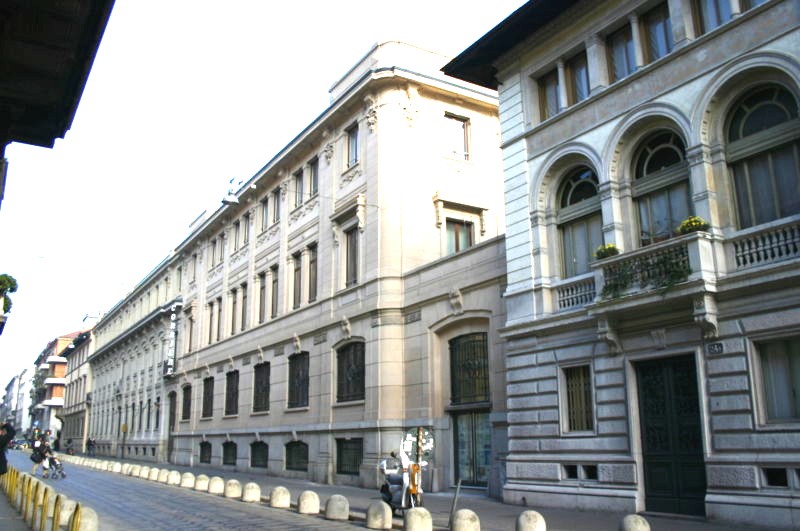
[Above: The Corriere Della Sera building in Milan]
The Corriere Della Sera is the Italian equivalent of the New York Times and the London Times.
It wields huge influence throughout Italy and reflects the popular mood in its reporting. It does NOT like the campaign of vilification against the trial and its outcome. Here is a translation of today’s blast by Beppe Severgnini.
The do-it-yourself verdicts and that wrongful U.S.A. cheering
Many Americans criticize the ruling, but have never followed the case. Why do they do that?
Judicial nationalism and media justice, when put together, form a deadly cocktail. We also have Reader-patriots and journalist-judges ourselves, but what is happening in the United States after the conviction of Amanda Knox, is embarrassing. Therefore it is highly worth pondered upon.
American television, newspapers and websites are convinced that Amanda is innocent. Why? No one knows. Did they follow all of the trial? Did they evaluate the evidence? Did they hear the witnesses who, moreover, testified in Italian? Of course not! They just decided so: and that’s enough.
Like Lombroso’s*** proselytes: a girl that is so pretty, and what’s more, American, cannot possibly be guilty. No wonder Hillary Clinton is now interested in the case: she’s a politician, and cannot ignore the national mood.
There are, as I wrote at the beginning, two aspects of the issue. One is judicial nationalism, which is triggered when “a passport is more significant than an alibi” as noted in yesterday’s Corriere’s editorial by Guido Olimpio. The United States tend to always defend its citizens (Cermis tragedy, the killing of Calipari) and shows distrust of any foreign jurisdiction (hence the failure to ratify the International Criminal Court). In the case of Italy, at play are also the long almost biblical timespans of our justice, for which we’ve been repeatedly criticized at the European level.
But there is a second aspect, just as serious as the first: the media justice operation. Or better: a passion for the do-it-yourself trial. It’s not just in the United States that it happens, but these days it is precisely there that we must look, if we want to understand its methods and its consequences.
Timothy Egan - a New York Times columnist, based in Seattle, therefore from the same city of Amanda - writes that the ruling “has little to do with the evidence and a lot with the ancient Italian custom of saving face.” And then: “The verdict should have nothing to do with medieval superstitions, projections sexual fantasies, satanic fantasies or the honor of prosecuting magistrates. If you only apply the standard of law, the verdict would be obvious “.
But obvious to whom? Egan ““ I’ll give it to him - knows the case. But he seems determined, like many fellow citizens, to find supporting evidence for a ruling that, in his head, has already been issued: Amanda is innocent. In June - the process was half-way - he had already written “An innocent abroad” (a title borrowed from Mark Twain, who perhaps would not have approved this use).
To be sure, among the 460 reader comments, many are full of reasonable doubt and dislike journalists who start from the conclusion and then try in every way to prove it.
I did not know if Amanda Knox was guilty. In fact, I did not know until Saturday, December 5, when a jury convicted her. I do have the habit of respecting court judgments, and then it does not take a law degree ““ which I happen to have, unlike Mr. Egan - to know how a Court of Assizes works.
It is inconceivable that the jurors in Perugia have decided to condemn a girl if they had any reasonable doubt. We accept the verdict, the American media does not. But turning a sentence into an opportunity to unleash dramatic nationalistic cheering and prejudice is not a good service to the cause of truth or to the understanding between peoples.
A public lynching, a witch hunt trial? I repeat: what do our American friends know? How much information do those who condemn Italy on the internet possess? How much have those who wrote to our Embassy in Washington, who accused the magistrates in Perugia, and who are ready to swear on Amanda’s innocence, studied this case for past two years?
Have they studied the evidence, assessed the experts’ testimony, or heard the witnesses of a trial that was much (too) long? No, I suppose. Why judge the judges, then?
They resent preventive detention? We don’t like it either, especially when prolonged (Amanda and Raffaele have spent two years in prison before the sentence). But it is part of our system: in special cases, the defendant must await trial while in jail.
What should we say, then, about the death penalty in America? We do not agree with it, but we accept that in the U.S. it is the law, supported by the majority of citizens. A criminal, no matter which passport he has in his pocket, if he commits a murder in Texas, knows what he risks.
Before closing, a final, obligatory point: I also did not like the anti-Amanda crusade in the British media, for the same reasons. The nationality of Meredith, the victim, does not justify such an attitude.
For once - can I say it? - We Italians have behaved the best. We waited for and now we respect the ruling, pending further appeal.
I wish we Italians behaved like that with all other high profile crimes in our country - from Garlasco’s case and on - instead of staging trials on television and spewing verdicts from our couch.
***Note: Cesare Lombroso, was a 19th century Italian criminologist who postulated that criminality was inherited, and that someone “born criminal”’ could be identified by physical defects.
[Below: the distinguished Italian columnist Beppe Severgnini of Corriere]
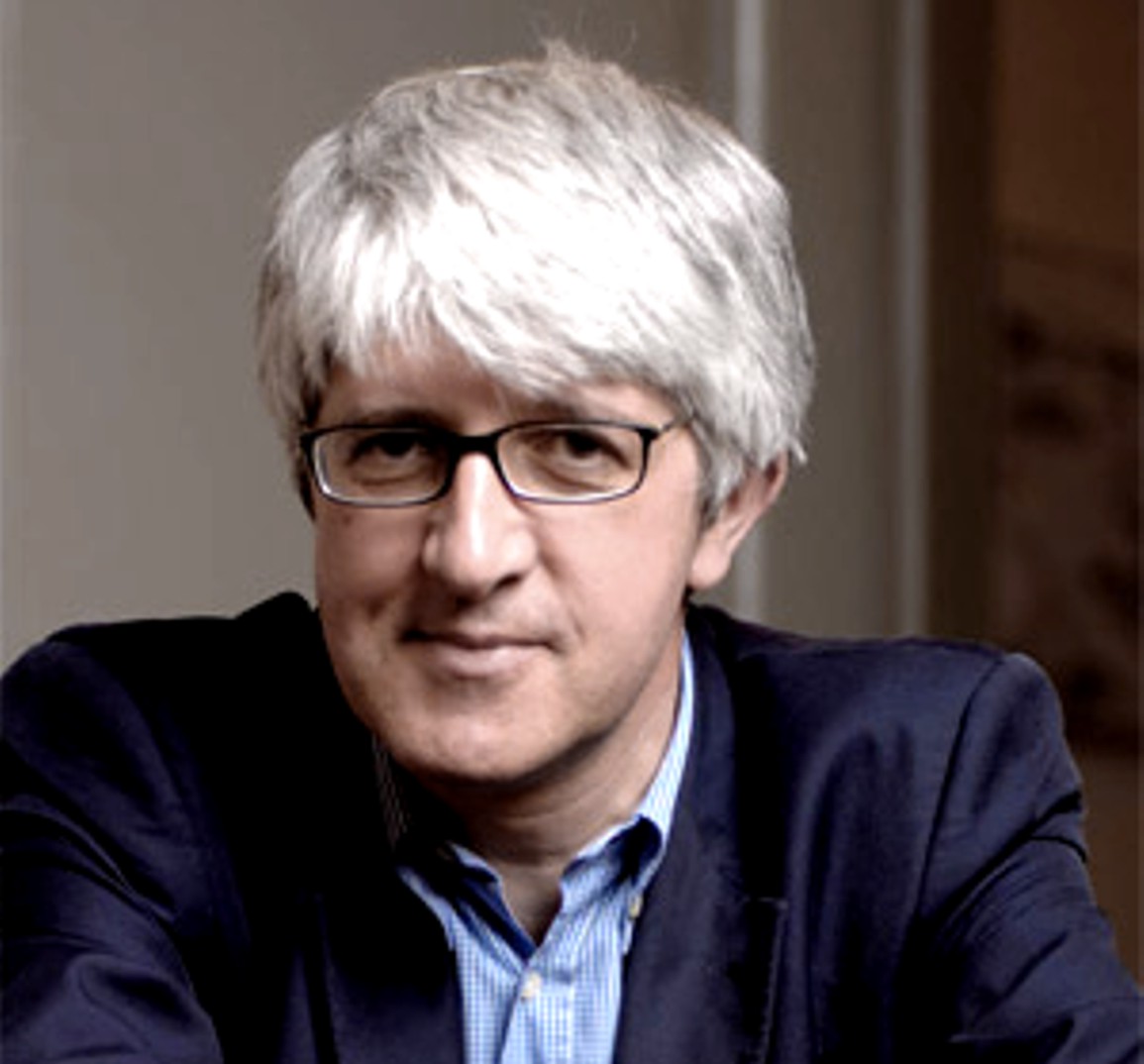
Monday, November 23, 2009
Seems Sollecito Is Feeling Really Sorry - For Himself (So What’s New?)
Posted by Peter Quennell
Seems his main problem is the framing of Rudy Guede as lone-wolf perpetrator went south. Just at the very worst time, the pesky fellow had to get caught.
And Raffaele doesn’t like prison. Just a lower class of persons in there. And as for those nasty media - well, for their coverage of this case, they just never seem to catch a break.
A hint here, to Raffaele: try telling one single story that actually explains all. Dozens of things now catch you out. And if you did commit Meredith’s murder, please look Meredith’s family in the eyes and show how desperately sad and sorry you are.
Our poster Tiziano remarked when sending along this translation from Umbria Journal: “He’s talking… wait for it… what a little wimp”.
SOLLECITO TO MAGAZINE GENTE: WITHOUT MY FAMILY I WOULD BE BENEATH THE EARTH
“If it had not been for my family, I would have ended up buried.” This is what Raffaele Sollecito said to Gente, on the newsstands on November 23rd.
“The meaning of this story” the young man said to the weekly, which has provided a preview of the article “is in the fact that the investigators have formed a mistaken idea right from the start. If Rudy Guede had been arrested before I was, before Amanda and before Patrick Lumumba, they would never have known either me or Amanda or Patrick Lumumba.”
From prison, Sollecito says: “I am psychologically destroyed, demoralised, tired. If I did not have my family behind me you would have found me under the ground at this time.”
He added: “The media have described Amanda as a Venus, a woman capable of immediate, perverted conquests. It’s nothing like this. It’s a matter of naivety. She is a simple girl, attractive but absolutely normal. At times she is guilty of ingenuousness. But the thing which has upset me most is when they attacked my family. It’s not fair, they are doing nothing wrong or incorrect if they defend me.”
Gente then reveals that Sollecito goes into specifics about the trial. “I never met Guede” he adds “I saw him once at the court. And nothing of the footprints or shoe prints found, imprints of alleged genetic material, belongs to me; simply because on the morning of November 2nd I had shoes which are not Nike brand and I don’t walk around the house barefoot.”
Friday, September 18, 2009
Trial: Defense Expert Tries To Claim Sollecito-Sized Footprint Is Guede’s
Posted by Peter Quennell
Click above for the Daily Express’s full report. The relevant section:
A bloody footprint found at the house where a British student was killed in Italy was wrongly attributed to one of the defendants in the case, a forensic expert has testified at the murder trial.
The footprint was found on a bathroom rug in the house in Perugia where Meredith Kercher was killed in November 2007.
Prosecutors have attributed it to Raffaele Sollecito, an Italian who is on trial on murder charges with Amanda Knox, his girlfriend at the time. Both defendants deny wrongdoing.
In his testimony, expert Francesco Vinci compared detailed pictures of the footprint on the rug with images of Sollecito’s feet, arguing that the sizes and shapes “absolutely don’t match”.
“Differences, one by one, can be seen,” said Vinci, who is a witness for Sollecito’s defence.
According to Vinci, the footprint is “compatible” with the foot of a third man, Rudy Hermann Guede, who was convicted in a separate trial last year and sentenced to 30 years in prison.
In effect then, the claim is that Guede was participating with bare feet in the cleanup of the crime scene some time after the death of Meredith - although precisely what he cleaned up is unclear, as strong evidence of his presence remains.
Like many of the defense’s attempts at rebuttals, this sounds to us like a tragedy that is now playing out as farce.
In one of his clinically precise powerpoints Kermit already refuted this claim
Tuesday, September 08, 2009
The Vilification Of Prosecutor Mignini Clearly Continues To Misfire
Posted by Peter Quennell
In this recent post we included an amazing statement from Mr Mignini.
A number of sources then confirmed that he and we had it exactly right in that post and that the claims of the American writer of the lurid “Monster Of Florence” are nasty, mischievous, and simply don’t check out.
Sources tell us Mr Mignini may have sharp elbows - but he is also very fair and careful, rarely leaks or does anything just for the publicity, does a great job for Perugia (where he is rather popular), and really respects the victims of crimes and and their families - in this case, Meredith and her family who repeatedly sound like they respect him.
Now La Nazione is reporting that Mr Mignini is again aggressively fighting back against the so-far-fruitless campaign to vilify him.
He is planning to sue a Joe Cottonwood, seemingly a publicity-hungry carpenter and occasional journalist in California whose knowledge of the case would apparently not even cover a postage stamp. And who seems to feel he has a license to shoot his mouth off slanderously in Italy, regardless of who actually gets hurt.
The publisher of his uninformed take on the case in Il Giornale will apparently also be sued,
From La Nazione:
According to the American writer [Cottonwood] among other things, “perhaps in Italy there is a hatred of American college students who give joy to madness. Amanda will pay not for her guilt or innocence, but because of popular resentment towards rich and superficial Americans. The murder of Meredith Kercher is one of those mirrors that reflect the prejudices of the investigators.”
The last time that the prosecutor had moved for legal action was in January, when the West Seattle Herald described him as “inadequate” and “mentally unstable”. In that case, in a move that many had regarded as completely understandable as well as justified, the prosecutor saw fit to start concrete legal action.And now the same judge [Mr Mignini] is preparing for a new legal battle after suffering yet another attack from the disparaging “‘stars and stripes”. Mr Mignini and his colleague Manuela Comodi are preparing an indictment for after the conclusion of the trial, which resumes in mid-month this month.
Nice going by the fatuous Joe Cottonwood. For those of a less xenophobic frame of mind here actually is the evidence. A series still far from complete.
Thursday, July 30, 2009
Case For The Prosecution: #3 Raffele Sollecito’s Multiple Conflicting Alibis
Posted by The Machine

[above: Sollecito with his lawyer Giulia Bongiorno; click for a larger image]
The Sollecito Alibis: How They Conflict
The first two posts on the power of the case were on the DNA evidence, and the luminol-enhanced footprint evidence.
In this and the next post we will elaborate upon the testimony relevant to the multiple alibis given by Amanda Knox and Raffaele Sollecito and the evolving circumstances in which they were given.
Following the discovery of Meredith’s body in her house, more than a dozen possible witnesses were quite expeditiously questioned: Meredith’s various English friends, her two Italian housemates, the four boys who lived downstairs, and Knox and Sollecito.
Meredith’s English friends, her two Italian housemates, and the boys downstairs fully cooperated with the police. They seemed to be telling the truth. They had one alibi each that could readily be verified. Those alibis never changed.
As a direct result they were all quickly eliminated from the investigation.
In stark contrast, Amanda Knox and Raffaele Sollecito appeared to be obfuscating. They appeared callous, impatient, arrogant, and reluctant to cooperate with the police.
These were attitudes first publicly noted as incriminating in mid 2008 by the judges at the Italian Supreme Court. Police and prosecution did not leak.
Knox and Sollecito each made three separate attempts to come up with credible alibis. All appeared desperate and semi-rehearsed. None of them made total sense or managed to get them off the hook. Neither helped the other at all.
Today, we address Sollecito’s alibis.
The prosecution undermined them in various ways. Sollecito did not take the stand at trial to repeat any of them. His occasional interventions in the courtroom did not strengthen any of them. He made no attempt to corroborate the third alibi of Knox (that she was at his place all night) and immediately prior to arrest he said she had made him lie.
Everyone at and around trial knew of the wariness and extreme anger of the two (and their families) and how they knocked chips off one another whenever they could.
Innocent behavior? You decide. If each was not blaming the other for their plight this behavior would be unique in the history of crime.
Raffaele Sollecito’s first alibi
For his first alibi Raffaele Sollecito claimed, in an interview with Kate Mansey from the Sunday Mirror, that he and Amanda Knox were at a friend’s party on the night of the murder. It appears that this is the alibi that Sollecito also first told the police.
As there seems to have been no party, or in any case no party they attended, it would have been difficult for Sollecito to find any witnesses, and so this alibi was quickly superceded.
Raffaele Sollecito’s second alibi
For his second alibi Sollecito now claimed that he was at his apartment throughout the night with Amanda Knox.
This alibi was contradicted by the forensic evidence presented by the prosecution. According to the testimony of the scientific police from Rome, there were six separate pieces of forensic evidence that placed him in the cottage on Via Della Pergola on the night of the murder.
These included an abundant amount of his DNA on Meredith’s bra clasp, and a bloody footprint on the blue bathmat in Meredith’s bathroom which appears to match the precise characteristics of his foot.
Sollecito’s claim that he was at his apartment the whole evening on 1 November was also undermined by Amanda Knox, who claimed in one of her own witness statements that he was also at the cottage when Meredith was killed:
Yes we were in the house. That evening we wanted to have a bit of fun. We were drunk. We asked her to join us. Diya wanted her. Raffaele and I went into another room and then I heard screams.
This alibi was also undermined by an eyewitness, Antonio Curatolo, the watcher in the park above the house, who testified that he saw Sollecito there. And it was undermined by Sollecito himself when he moved to the third alibi below.
In my previous statement I told a load of rubbish because Amanda had convinced me of her version of the facts and I didn’t think about the inconsistencies.
Although Rudy Guede exercised his right to silence when he was called as a witness in the present trial, it should be noted that at his own trial last October and in the stated grounds for his appeal, he has claimed that Amanda Knox and Raffaele Sollecito were both at the cottage on the night in question, and that they were responsible for Meredith’s murder.
Raffaele Sollecito’s third alibi
Sollecito was asked to return to the police station on 5 November to answer some more questions. He was at that time confronted with telephone records that proved that he and Amanda Knox had lied previously.
So for his third alibi, which now cut Amanda Knox loose and implicated her, Sollecito claimed that he was at his apartment all evening, and that for part of the evening Knox was out, from 9 pm to 1 am.
In my previous statement I told a load of rubbish because Amanda had convinced me of her version of the facts and I didn’t think about the inconsistencies….
Amanda and I went into town at around 6pm, but I don’t remember what we did. We stayed there until around 8.30 or 9pm.
At 9pm I went home alone and Amanda said that she was going to Le Chic because she wanted to meet some friends. We said goodbye. I went home, I rolled myself a spliff and made some dinner.”
He goes on to say that Amanda returned to his house at around 1am and the couple went to bed, although he couldn’t remember if they had sex.
This third alibi was undercut by Amanda Knox when she took the stand and testified. She stated that she was with Sollecito at his place all night.
It was also contradicted by the forensic evidence presented by the prosecution: the six separate pieces of forensic evidence that placed him in the cottage on Via Della Pergola on the night of the murder.
This third alibi was also undermined by the telephone records and by the data taken from his computer.
Sollecito claimed that he had spoken to his father at 11 pm. The phone records showed that to the contrary, there was no telephone conversation at this time, though Sollecito’s father had called him a couple of hours earlier, at 8.40 pm.
Sollecito claimed that he was surfing the internet from 11 pm to 1 am. Marco Trotta, a police computer expert, testified that the last human interaction on Sollecito’s computer that evening was at 9.10 pm and the next human activity on Sollecito’s computer was at 5.32 am.
Sollecito said that he downloaded and watched the film Amelie during the night. However, Mr Trotta said that the film had been watched at around 6.30 pm, and it was earlier testified that Meredith returned to the cottage she shared with Amanda Knox at about 9 pm.
Sollecito claimed that he had slept in until 10 am the next day. There was expert prosecution testimony that his mobile phone was actually turned on at 6.02 am. The Italian Supreme Court remarked that his night must have been “sleepless” to say the least.
This alibi was undermined by the eyewitness Antonio Curatolo, the watcher in the park above the house, who testified that he saw Sollecito there.
Sollecito’s difficult situation resulting
Sollecito does not seem to have done himself any favours by exercising his right to remain silent and not to testify at the trial.
As things now stand, he does not have any credible alibi or scenario for the night of the murder. Also it would appear that he has damaged his overall credibility irreparably, by giving three alibis that differed so considerably.
Judge Paolo Micheli had in front of him much of the same evidence. He wrote, in committing Raffaele Sollecito to trial last October, that he considered the triple alibis to be a clear indication of guilt.
There seems to be no obvious reason right now why the present judges and jury would conclude differently.

